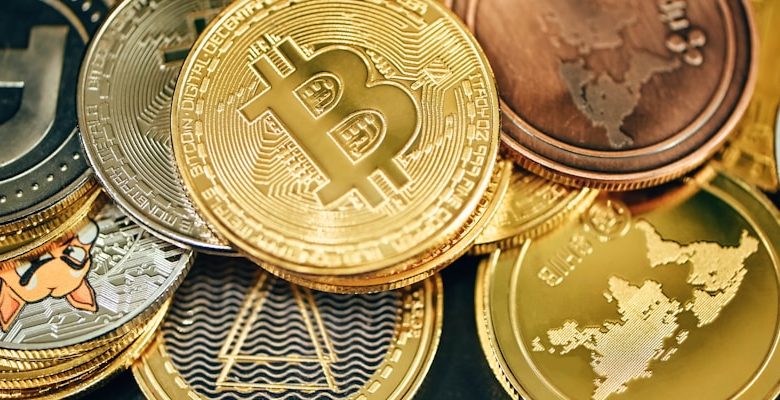How Crypto is Bridging the Gap Between Traditional Finance and DeFi

- Understanding the evolution of traditional finance
- Exploring the rise of decentralized finance (DeFi)
- The role of cryptocurrencies in reshaping the financial landscape
- Challenges and opportunities in merging traditional finance with DeFi
- Key players driving the convergence between traditional finance and DeFi
- The future of finance: a seamless integration of traditional and decentralized systems
Understanding the evolution of traditional finance
Traditional finance has been a cornerstone of the global economy for centuries, providing essential services such as lending, borrowing, and investing. Over time, traditional financial systems have evolved to meet the changing needs of consumers and businesses alike. However, these systems have also faced criticism for being slow, expensive, and exclusive.
One of the key criticisms of traditional finance is its reliance on intermediaries such as banks and financial institutions. These intermediaries often charge high fees for their services, making it difficult for individuals with limited resources to access essential financial tools. Additionally, the centralized nature of traditional finance can leave it vulnerable to fraud and manipulation.
In recent years, decentralized finance (DeFi) has emerged as a potential solution to many of the problems associated with traditional finance. DeFi relies on blockchain technology to create transparent, secure, and efficient financial systems that operate without the need for intermediaries. This has the potential to democratize finance, making it more accessible to a broader range of individuals and businesses.
By understanding the evolution of traditional finance and the challenges it faces, we can better appreciate the role that DeFi plays in bridging the gap between traditional finance and the future of finance. As DeFi continues to grow and evolve, it has the potential to revolutionize the way we think about and interact with money, paving the way for a more inclusive and equitable financial system for all.
Exploring the rise of decentralized finance (DeFi)
Decentralized finance (DeFi) has been gaining popularity in the cryptocurrency space as an alternative to traditional finance systems. DeFi platforms allow users to access financial services such as borrowing, lending, and trading without the need for intermediaries like banks or brokers. This shift towards decentralized systems is driven by the desire for more control over financial assets and greater transparency in transactions.
One of the key features of DeFi is the use of smart contracts, which are self-executing contracts with the terms of the agreement directly written into lines of code. These smart contracts automate the process of financial transactions, eliminating the need for a middleman to oversee the process. This not only reduces costs but also increases the speed and efficiency of transactions.
Another benefit of DeFi is its accessibility to a global audience. Traditional financial systems often exclude individuals who do not have access to banking services or who are unable to meet the strict requirements set by financial institutions. DeFi, on the other hand, allows anyone with an internet connection to participate in financial activities and gain exposure to a wide range of investment opportunities.
As DeFi continues to grow and evolve, it is important for investors to understand the risks associated with this emerging sector. Security vulnerabilities, regulatory uncertainties, and the potential for smart contract bugs are all factors that can impact the stability of DeFi platforms. By staying informed and conducting due diligence before participating in DeFi activities, investors can mitigate these risks and make informed decisions about their financial assets.
The role of cryptocurrencies in reshaping the financial landscape
Cryptocurrencies have been playing an increasingly significant role in reshaping the financial landscape by bridging the gap between traditional finance and decentralized finance (DeFi). These digital assets have introduced a new way of transacting value globally, offering faster, more secure, and cost-effective solutions compared to traditional financial systems.
One of the key ways in which cryptocurrencies are reshaping the financial landscape is by providing greater financial inclusion to individuals who are underserved by traditional banking systems. With cryptocurrencies, individuals can access financial services such as savings, loans, and investments without the need for a traditional bank account. This has the potential to empower millions of unbanked individuals around the world, enabling them to participate in the global economy.
Furthermore, cryptocurrencies are also revolutionizing the way in which cross-border transactions are conducted. Traditional financial systems often involve high fees and long processing times when sending money overseas. Cryptocurrencies, on the other hand, allow for near-instantaneous and low-cost transactions across borders, making it easier for individuals and businesses to engage in international trade and commerce.
In addition to financial inclusion and cross-border transactions, cryptocurrencies are also driving innovation in the financial sector through the rise of DeFi. Decentralized finance platforms built on blockchain technology are enabling individuals to access a wide range of financial services, such as lending, borrowing, and trading, without the need for intermediaries. This has the potential to disrupt traditional financial institutions and create a more efficient and transparent financial system.
Overall, cryptocurrencies are playing a crucial role in reshaping the financial landscape by providing greater financial inclusion, facilitating cross-border transactions, and driving innovation through decentralized finance. As these digital assets continue to gain mainstream adoption, they have the potential to transform the way we think about and interact with money and finance.
Challenges and opportunities in merging traditional finance with DeFi
As traditional finance and decentralized finance (DeFi) continue to merge, there are both challenges and opportunities that arise in this evolving landscape. It is essential to navigate these complexities to fully harness the potential benefits of this integration.
One of the primary challenges in merging traditional finance with DeFi is regulatory compliance. Traditional financial institutions are subject to strict regulations to ensure customer protection and maintain financial stability. DeFi, on the other hand, operates in a decentralized and often anonymous environment, making it challenging to adhere to traditional regulatory frameworks.
Another challenge is the integration of legacy systems with blockchain technology. Traditional financial institutions have established infrastructure and processes that may not easily align with the decentralized nature of DeFi. This can lead to technical hurdles and interoperability issues that need to be addressed for a seamless transition.
Despite these challenges, there are significant opportunities in merging traditional finance with DeFi. One such opportunity is increased financial inclusion. DeFi has the potential to provide access to financial services for underserved populations who may not have access to traditional banking systems.
Additionally, the automation and efficiency of DeFi platforms can streamline processes and reduce costs for traditional financial institutions. By leveraging smart contracts and blockchain technology, transactions can be executed more quickly and securely, leading to improved operational efficiency.
Furthermore, the transparency and security of blockchain technology can enhance trust and accountability in the financial system. This can help mitigate risks such as fraud and improve overall trust in financial transactions.
Key players driving the convergence between traditional finance and DeFi
The convergence between traditional finance and DeFi is being driven by a number of key players in the industry who are pushing for greater adoption and integration. These players are at the forefront of bridging the gap between the two worlds and are instrumental in shaping the future of finance. One such player is the rise of centralized exchanges that are starting to incorporate DeFi services into their platforms, creating a seamless experience for users who want to access both traditional and decentralized financial products. Additionally, institutional investors are increasingly getting involved in the DeFi space, bringing with them a wealth of knowledge and experience that can help to legitimize the industry and attract more mainstream interest. Another key player in this convergence is the development of interoperability solutions that allow different blockchains and financial systems to communicate with each other, making it easier for users to move assets between traditional and decentralized platforms. Finally, regulatory bodies are starting to take a more active role in overseeing the DeFi space, providing much-needed guidance and clarity that can help to facilitate the integration of traditional finance and decentralized protocols. Overall, these key players are working together to drive the convergence between traditional finance and DeFi, creating new opportunities for innovation and growth in the financial industry.
The future of finance: a seamless integration of traditional and decentralized systems
The future of finance lies in the seamless integration of traditional banking systems with decentralized finance (DeFi) platforms. This convergence is already underway, with crypto serving as a bridge between the two worlds. As more people embrace digital currencies and DeFi applications, the line between traditional finance and decentralized systems will continue to blur.
One of the key advantages of this integration is the ability to access a broader range of financial services. Traditional banks are limited in the products they offer, while DeFi platforms provide a wide array of options, from lending and borrowing to trading and yield farming. By combining the strengths of both systems, users can enjoy the security and stability of traditional banking alongside the innovation and flexibility of DeFi.
Another benefit of this integration is the democratization of finance. Traditional banking systems have long been criticized for excluding certain populations, such as the unbanked and underbanked. DeFi platforms, on the other hand, are accessible to anyone with an internet connection, allowing people from all walks of life to participate in the global economy.
As the industry continues to evolve, we can expect to see more collaboration between traditional financial institutions and DeFi projects. Banks may start offering services built on blockchain technology, while DeFi platforms could partner with established institutions to enhance their offerings. This hybrid model has the potential to revolutionize the way we think about money and finance, creating a more inclusive and efficient system for all.



